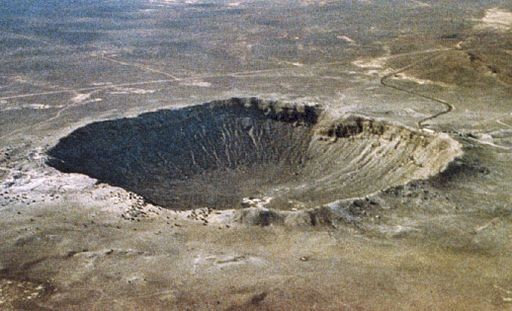When a meteorite or asteroid collides with the surface of the Earth, impact craters are formed. These cavities play a significant role as geological features that offer important information about the origin of our planet. However, recent studies reveal that some of the ancient impact craters left on Earth by astronomical objects are vanishing.

Searching for the Lost Cavities
Geologists cannot find the ancient impact craters, and they might never be able to, as revealed in a new study conducted by a group of researchers from the University of the Western Cape in South Africa. They have found evidence of impacts, but the holes are difficult to find.
Proofs of impact include ejecta or the material thrown away, melted rocks, and high-pressure minerals from over 3.5 billion years ago. However, the oldest known impact structures on Earth, called massive craters, are only approximately 2 billion years old. We are missing almost two and a half billion years of mega craters on Earth's surface.
According to planetary scientist Matthew S. Huber, many questions can be answered if the old craters are visible. However, events like this are acceptable in geology, and experts prefer to make a story from available resources.
Geologists can often find hidden, buried craters using geophysical tools like gravity mapping or seismic imaging. Upon identifying the potential impact structures, the scientists can look for physical leftovers of the impact process, which will confirm its existence.
The research team dug into the Vredefort crater in South Africa, one of Earth's most ancient known impact structures. It measured 186 miles in diameter and was created about 2 billion years ago when a space object 12.4 miles long crashed into the planet.
The impact left a long-term dome in this crater as the crust and mantle rose. Today, the only remaining evidence of the impact is a semicircle of low hills in the southwest region of Johannesburg. Although the bullseye is located in gravity maps, the geophysical evidence of the event beyond the center is lacking.
READ ALSO: Huge Meteor Crater in Arizona Formed 50,000 Years Ago Still Useful for Scientific Studies
What Happened to the Ancient Craters?
The oldest craters on Earth provide scientists with various critical information, such as the structure of the young Earth, the composition of the members of the Solar System, and the interpretation of crater records on other planets.
The constant passing of time and the persistent erosion and weathering are attributed to the gap. Huber believes that erosion makes the impact structures vanish from the top down. As a result, the possibility of finding buried impact structures from over 2 billion years ago is very low.
Forces such as water, atmosphere, and tectonic activity all contribute to Earth's surface erosion and eventually erasing the most recent impact craters.
The major concern for Huber and his colleagues involves the number of craters that can be swept away by erosion before the last lingering traces of geophysical events vanish. Geophysicists suggested that 6.2 miles of vertical erosion are enough to erase the largest impact structures, although that threshold had never been verified.
RELATED ARTICLE: Nadir Crater in West Africa Suggests a Second Impact After the Chicxulub Crater From the Asteroid That Wiped Out the Dinosaurs
Check out more news and information on Crater in Science Times.














